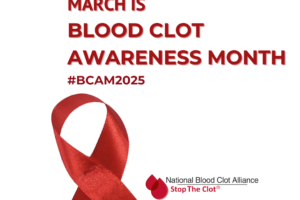Questions & Answers About Atrial Fibrillation
How to Take Blood Thinners Safely to Prevent Stroke with Atrial Fibrillation
What is atrial fibrillation?
Atrial fibrillation is an irregular or uneven rhythm in your heart. The top chambers of your heart, called the atria, do not beat in time with the bottom chambers, known as the ventricles. Patients often say they feel a fluttering, racing, or jumping in their chest when they have atrial fibrillation.
What are my risks with atrial fibrillation?
When your heart beats irregularly, blood may “pool,” or not flow forward. This increases the possibility of blood clots. Stroke is the most serious event when a blood clot travels to your brain.
How can I prevent a stroke?
Blood thinners are the usual treatment to prevent stroke. Warfarin or newer blood thinners such as rivaroxaban or dabigatran are effective for preventing strokes in patients with atrial fibrillation. They actually slow or stop clot formation, so are more “anti-clotting” drugs, even though they are known as blood thinners.
How can I decide which blood thinner is best for me?
This is a decision you make with your doctor, based on your health history and what works best in terms of your ability to take your medicine, your ability to get to a lab for blood tests, and what the medication costs. The main safety step is to take the dose at the right time your doctor tells you and do not skip or double doses.
What risks do blood thinners have?
Bleeding is the most common risk, but blood thinners are safe if you take them as ordered, and if you have your INR tested if you take warfarin. Risk for bleeding increases because blood thinners increase the time it takes your blood to clot. Call your doctor right away when you have any bleeding or unusual bruises.
What is an INR?
An INR tests how well warfarin is working. Usually, the normal INR is between 2.0 and 3.0, but your doctor will let you know what is normal for you. Rivaroxaban and dabigitran do not need blood testing.
What should I know about what I eat or drink?
The most important thing to know if you take warfarin is that you should keep your intake of foods high in vitamin K very consistent or steady. This means if you eat a salad every day, you can continue as long as you don’t have 3 salads on one day and none on another. Foods that are highest in vitamin K are green leafy vegetables, such as spinach, kale, lettuce. Alcohol intake should also be steady without bingeing. No alcohol is ideal, but the safest amount if you want a drink is no more than 2 drinks per day. You do not have to worry about what you eat or drink if you take rivaroxaban or dabigitran. However, it is safer to limit how many alcoholic drinks you have, because too many can put you at risk for a fall or injury.
What about aspirin?
Aspirin is sometimes given to patients that cannot take other blood thinners, but it is much less effective in preventing stroke in patients with atrial fibrillation.
What if I want to stop taking my blood thinner?
Patients can get tired of taking any medicine. This is a decision you should talk to your doctor about, because stopping your blood thinner makes a stroke more likely.
What if I want to stop taking my blood thinner?
Patients can get tired of taking any medicine. This is a decision you should talk to your doctor about, because stopping your blood thinner makes a stroke more likely.




